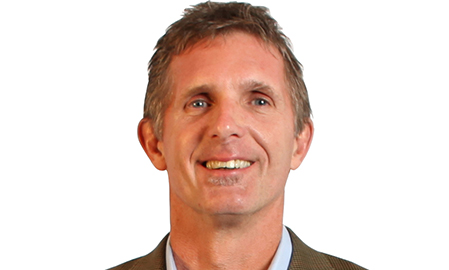Most innovation results from an exercise known as “thinking outside the box.” When you spend time considering the impossible, identifying paths where no one has gone before, or perhaps simply being the first person to identify an area that may support a path, you are in the zone.
I found myself thinking way off the beaten path last month when I read an article in USA Today entitled, “If ‘clean,’ big data can improve US health care.” The article suggests that a broad-based mining of social media data might provide insight into consumers’ health, and pointed to the fact that consumers may be more honest with their social postings than they are with their family doctor or their insurer.
Imagine if you are able to utilize broad-based consumer segmentation, linked to social health postings and identified geo-demographics, allowing you to more accurately reference patient-reported outcomes, therapeutic impact and efficacy. Consumer adoption of digital media is accelerating at a frenetic pace, and its integration into our daily lives is non-reversible. As the social-adopting individuals (or more broadly, generations) blaze this trail, privacy becomes less important.
While the lack of privacy concern is interesting, it really sets up the foundation of digital privacy concerns. It is almost impossible, in 2014, to hide your digital trail. Even if a good portion of your online activity is “under-cover,” it is only a matter of time before anonymity gets linked to identity.
This understanding is becoming a reality for most consumers (patients), given that their expectations are being set via experiences outside of our industry. They are experiencing the digitization of everything, social networking at scale, combined with mobility and being “on,” 24/7.
 Consumers aren’t trying to fight digitization, they are responding to it by shifting their patterns of media consumption and adjusting their personal behaviors, moving from simple involvement in their health to engagement and self-empowerment. Consider Figure 1 at the left, where you can see the lines becoming blurred across media, but clarity emerging relative to who we know and what we know about them.
Consumers aren’t trying to fight digitization, they are responding to it by shifting their patterns of media consumption and adjusting their personal behaviors, moving from simple involvement in their health to engagement and self-empowerment. Consider Figure 1 at the left, where you can see the lines becoming blurred across media, but clarity emerging relative to who we know and what we know about them.
The essence of the logic around less privacy equating to better health is really grounded in three key fundamentals:
1. Patients (consumers) are more likely to accurately reflect their health in links and posts on social media than in discussions with their physicians, employers and insurers. In many respects, this is almost analogous to the concept of patient-reported outcomes. The main difference is that they are discussing their health through their digital and virtual footprint, rather than through an exchange with their physician. Rapid adoption of tracking tools like FitBit (2.7 million wearables were shipped in Q1, 2014) quantifies the discussion and validates the posting.
2. The rapid increase in time spent on social media (73% increase to 90 minutes a day from 2010 to 2013[1]) is not about to be reversed, and the upside for growth is dramatic.[2]
3. Aligning the concept of addressability at scale (AAS), namely, the way companies connect with known and identified, as well as unknown and unidentified patients. AAS is enabled through the application of data and analytics to the digital audience platform marketplace. By using addressability to link “patient postings and reported outcomes” to appropriate socio-demographic segments, we increase the ability to target based on relevance and experience across the customer (patient) lifecycle. The key to this third fundamental is that we are leveraging both known and anonymous, widely available digital activity to profile and validate therapeutic decisions and their subsequent reported outcomes/impact. Additionally, the derived insight is not just related to the patient, but the patient’s household, social and support network, and associated caregivers, whose social/digital activity can be evaluated and subsequently targeted with relevant messaging.
The big “ah-ha” here is that pharmaceutical organizations will be able to derive all of this insight anonymously, within the scope of existing legislation while leveraging AAS. This approach could potentially lead to a tidal wave of insight, validated by actual diagnosis. In effect, listening to anonymous individual patient conversations leads to delivery of personal interventions based on segment aggregates and individual profiles.
This combination of virtual data, linked with therapeutic condition, patient-tracked personal health metrics, and anonymous patient segmentation, puts us on the verge of a pendulum shift. Namely, a new world order where demand is likely to drive legislation, as opposed to the last 10 to 20 years where legislation has driven demand.
Kent Groves is VP and senior leader in Merkle’s life sciences practice.
[1] Experian Marketing Services Reveals 27% of Time Spent Online is on Social Networking, Experian, Press Release, April 16, 2013
[2] Internet Trends 2014, Code Conference, Mary Meeker, KBCP, May 28, 2014.








